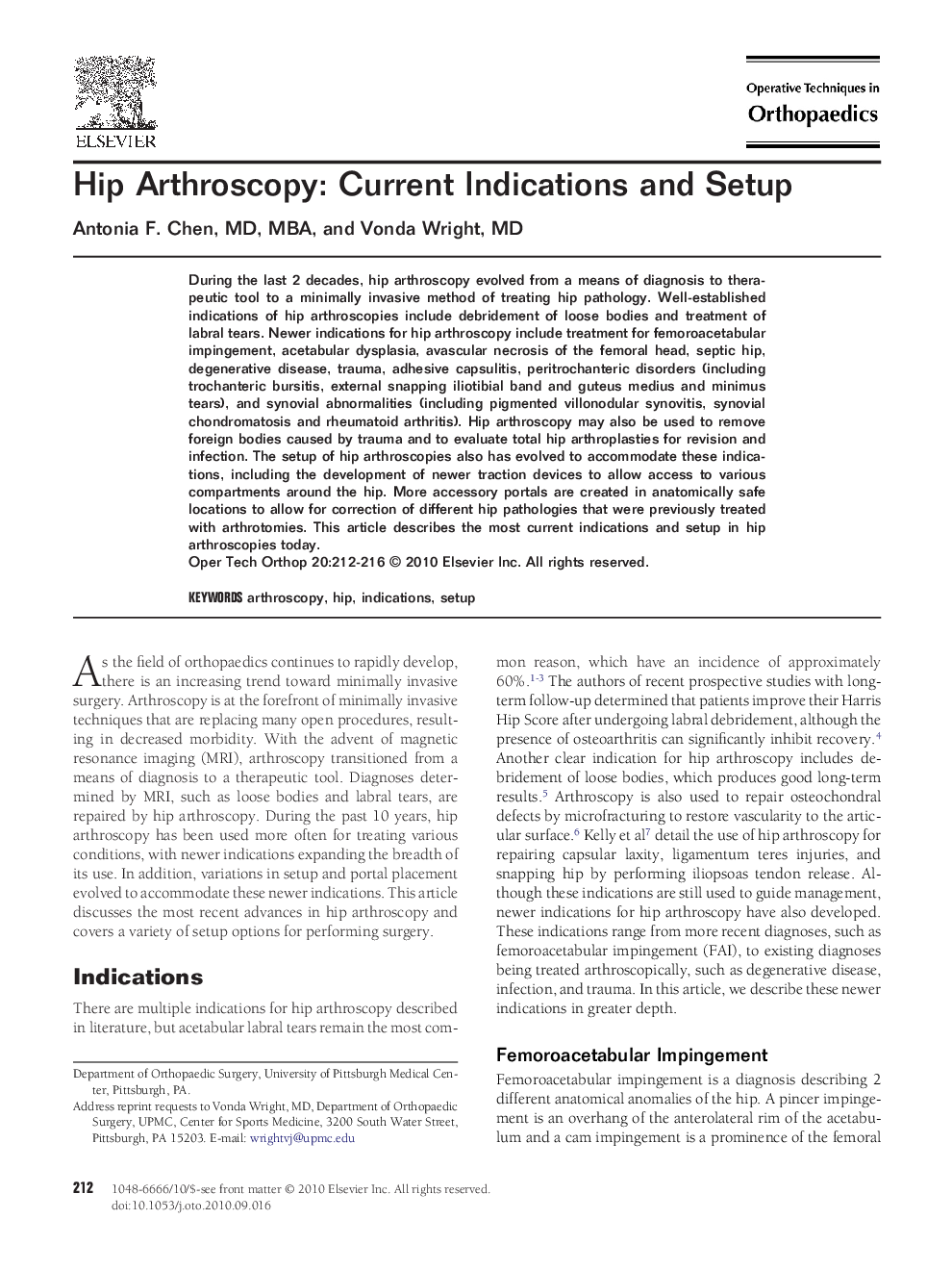| Article ID | Journal | Published Year | Pages | File Type |
|---|---|---|---|---|
| 4079056 | Operative Techniques in Orthopaedics | 2010 | 5 Pages |
Abstract
During the last 2 decades, hip arthroscopy evolved from a means of diagnosis to therapeutic tool to a minimally invasive method of treating hip pathology. Well-established indications of hip arthroscopies include debridement of loose bodies and treatment of labral tears. Newer indications for hip arthroscopy include treatment for femoroacetabular impingement, acetabular dysplasia, avascular necrosis of the femoral head, septic hip, degenerative disease, trauma, adhesive capsulitis, peritrochanteric disorders (including trochanteric bursitis, external snapping iliotibial band and guteus medius and minimus tears), and synovial abnormalities (including pigmented villonodular synovitis, synovial chondromatosis and rheumatoid arthritis). Hip arthroscopy may also be used to remove foreign bodies caused by trauma and to evaluate total hip arthroplasties for revision and infection. The setup of hip arthroscopies also has evolved to accommodate these indications, including the development of newer traction devices to allow access to various compartments around the hip. More accessory portals are created in anatomically safe locations to allow for correction of different hip pathologies that were previously treated with arthrotomies. This article describes the most current indications and setup in hip arthroscopies today.
Keywords
Related Topics
Health Sciences
Medicine and Dentistry
Orthopedics, Sports Medicine and Rehabilitation
Authors
Antonia F. MD, MBA, Vonda MD,
